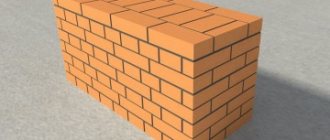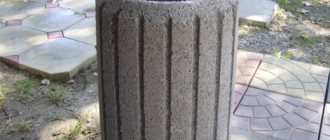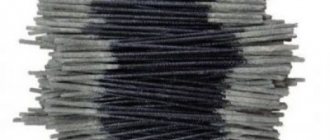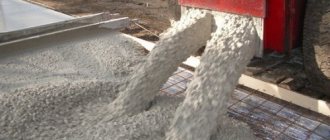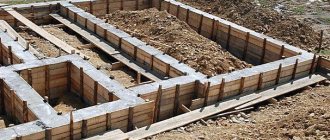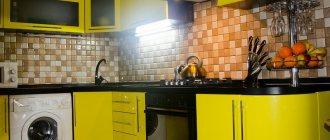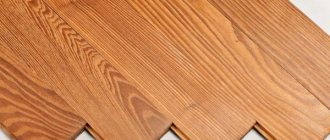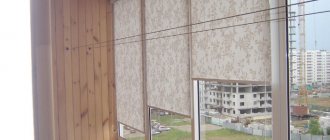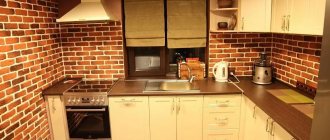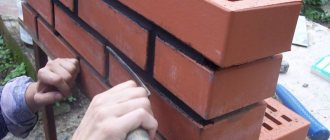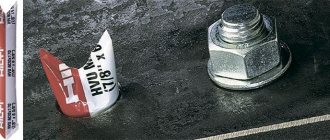Why is waterproofing needed?
For many people who are not involved in construction, water seems like a minor threat. And they have a very vague idea of what waterproofing is. Meanwhile, salts and minerals in water are real destroyers of building materials. Penetrating into their structure, water washes out the binding elements from them, causing microcracks and oxidation of metal structures. Wood absorbs water most easily, which causes it to rot and form fungus. Moreover, structures are protected not only from external sources of water. For example, in bathrooms, condensation can cause damage to walls no less than groundwater, with all the ensuing consequences.
In what cases is waterproofing used and its classification?
There are standards according to which it is recommended to use moisture protection. In order to decide which waterproofing to choose in a particular case, it is necessary to take into account all its operational properties, advantages and disadvantages.
According to their purpose, all types are divided into three classes:
- non-pressure – used for protection against so-called negative pressure, that is, moisture that acts on the material without pressure. Most often from flood and rain waters;
- anti-pressure – designed to protect the working surface from water acting on it under pressure (positive pressure). Most often these are materials that are applied to the outside of the structure;
- capillary - materials that protect porous materials from water, the structure of which tends to absorb moisture.
Now let’s look at what kind of waterproofing there is depending on the method of installation on the work surface, as well as its main technical qualities:
- roll;
- coating;
- penetrating;
- painting;
- mounted;
- sprayable;
- injection.
Waterproofing materials and rules for their selection
Each group of waterproofing materials is represented on the building materials market, as a rule, by several types of products. The right choice in favor of a particular product largely depends on its price.
Also plays a big role in this regard:
- method of application,
- need for special equipment,
- seasonality of use,
- the size of the processed area of the foundation.
The choice of material type is influenced by such conditions as the presence of vertical and horizontal cultivated areas, groundwater level, soil freezing depth, average annual precipitation, and the threat of floods.
Main selection criteria:
For the “tape” it is better to choose bitumen or polymer materials, penetrating or plaster coating.- For columnar and pile-screw foundations, different methods are suitable depending on the required degree of protection, but it is recommended to coat the outside with an anti-corrosion compound.
- It is good to combine vertical and horizontal insulation, but if the opportunity for horizontal protection has been missed, it is better to give preference to the roll method or spraying liquid rubber.
It is worth deciding on the insulation method at the beginning of construction in order to take this into account when installing the foundation. A combination of several methods can give a good effect.
Roll (pasting)
Roll is the most common type of waterproofing, used on all types of building materials. Based on the installation principle, it is sometimes called pasting. This type of waterproofing is used for installation on both horizontal and vertical surfaces.
This material is produced in the form of rolls, on a dense base of which bitumen is applied. The basis of such materials can be made of cardboard (the most budget option), fiberglass or polyester (the highest quality). The first two types of base are simpler and more economical. Polyester is classified as premium.
The main advantages of this method of waterproofing include the cost-effectiveness and availability of materials. They can be laid on absolutely any horizontal or vertical surface. Rolled waterproofing has not only moisture-proof properties, but also resistance to aggressive environments. The disadvantages of this type of waterproofing include the difficulty in preparing the working surface, as well as high requirements for temperature conditions during installation. The surface on which rolls are rolled out must be flat and dry. Obvious disadvantages include the fragility of the material and its relative fragility.
Coating
This type of waterproofing is a layer of bitumen, resins or bitumen-polymer mastics that are applied to the working surface. Thus, a water-repellent protective layer is formed, mechanically preventing the penetration of moisture.
Coated waterproofing can be hot or cold. The first is solid pieces of bitumen, which must be heated before installation. As a rule, this is one of the types of construction waterproofing. The second type is ready-made mastics, based on one- or two-component compositions. Coating compositions can be used both as external protection and to protect the interior of the house, for example, a bathroom from flooding.
Coating mastics are considered a fairly cheap and affordable protection. They are distinguished by their ease of application, which makes it possible to use such waterproofing even for a person far from construction. This makes it one of the most common types of moisture protection. However, it has a lot of disadvantages. One of the main ones can be considered fragility and inelasticity at low temperatures. Over time, it begins to crack and peel, which leads to the rupture of the seal of the coating. Restoring such protection significantly increases its overall cost. But they are also demanding on the surface and air humidity. This also includes difficulties in installing hot bitumen associated with working at high temperatures.
Penetrating
This method is based on the penetration of a waterproofing solution into the pores of concrete. There it reacts with its components, resulting in the formation of crystals. These crystals prevent water from penetrating into the concrete.
This protection is applied to a moistened work surface, due to which the solution penetrates 20-30 centimeters or more. At the same time, the structure of concrete is strengthened, its strength and durability increases. Thanks to this action, many builders consider penetrating compounds to be the best waterproofing for protecting walls and foundations from the inside of a room.
Impregnating waterproofing has many advantages. Thanks to the chemical principle of action, it effectively prevents the absorption of moisture into concrete. In addition to moisture protection, the resistance of concrete to low temperatures and mechanical stress increases. At the same time, the vapor permeability of the building material does not suffer. By strengthening the composition of concrete, the solution makes it more durable and gives it the ability to self-heal (when crystals break, new ones form).
All penetrating impregnations are absolutely environmentally friendly, which makes it possible to use such products for waterproofing indoor spaces and for sealing drinking wells. There are few disadvantages to impregnating agents. This is the ineffectiveness of using them on materials other than concrete (since the brick does not have the necessary chemical reagents, and, for example, the pores in aerated concrete are too large). And also the need for a large amount of water necessary for its better waterproofing.
Painting room
This type of waterproofing includes bitumen mastics, rubber, and synthetic resins. Applied in several layers, it forms an elastic, seamless film that prevents moisture penetration. Such protection is used in both external and internal moisture insulation to eliminate already formed cracks and erosion. When it comes to the question of which waterproofing is best suited for a bathroom, preference is given to it. The advantages of painting waterproofing include its low cost, ease of installation and elasticity. There is only one drawback - it has a relatively short service life.
The essence of waterproofing
Penetrating coating waterproofing or painting, as it is otherwise called, acquired its name thanks to the use of coating mixtures and painting compositions.
The penetrating type of waterproofing is formed through the use of materials that contain Portland cement, fillers and a mixture of chemical compounds called active chemical additives.
Varieties of such materials include:
- cement-sand mixtures containing water-repellent modifiers;
- bitumen mastics;
- varieties of synthetic resins and other types.
The topic of treating underground structures with various waterproofing materials is quite interesting. Mostly, people show interest during the period when they have to carry out such work, and they are busy searching for suitable quality materials.
Naturally, the first place people look for information is on the Internet. Today, the world wide web is the first source for obtaining all the necessary data. This also applies to building materials, in particular penetrating waterproofing mixtures.
For efficiency, for those interested in this issue, general pages of construction sites, as well as individual sites belonging to certain companies, contain photos of penetrating waterproofing, packaged in containers or bags with dry composition, and calculated for a certain number of kilograms.
For the convenience of those who are ready to use such materials, instructions for use with consumption tables per square meter of concrete foundation are pasted onto the containers.
Mountable
Installed insulation includes bentonite mats. They are clay of the same name, applied to a two-layer cardboard base. After installing such plates, the cardboard base dissolves. Concrete clay, coming into contact with water, forms a gel, creating a waterproof layer that protects the work surface from any type of impact. In addition to using bentonite slabs as horizontal and vertical moisture protection, they can be used instead of the standard foundation blind area to drain rain and flood water from the building. But bentonite has one significant drawback - its very high cost.
Purpose
Waterproofing materials include materials characterized by waterproof properties. As a rule, they are made from highly resistant polymers. Waterproofing is used in various construction areas, and roofing is no exception.
Waterproofing materials for roofs have a specific purpose:
- Protection against moisture penetration into the frame due to mechanical failures.
- Warning of insulation getting wet. The thermal insulation material gets wet when it comes into contact with water, as a result of which many of its positive properties are lost and thermal conductivity increases.
- Ensuring protection of the solid wood roofing frame from contact with water. The frame, protected by a special waterproofing material, does not rot and is therefore characterized by a long service life.
- Ensuring protection of the entire interior of the structure from unwanted condensation.
Sprayable
Sprayed types of waterproofing most often consist of polymer-bitumen emulsions. Due to their external similarity, such substances are often called “liquid rubber”. Since spraying withstands positive water pressure well, they are used to protect roofs. Using this option in basements works worse, since the water pressure from below simply peels the coating off the base and tears it. With proper waterproofing with liquid rubber, a solid, sealed coating is created, covering even the smallest pores of the material with a water-repellent layer.
Today, liquid rubber is a very popular method of moisture insulation, but it also has a number of disadvantages. This coating is resistant to mechanical damage, and is also very demanding on weather conditions during application (at low temperatures the substance thickens, and in strong winds it is difficult to spray).
In addition, there are also increased requirements for the working surface. It should be as dry, even and not frozen as possible. If there were temperature violations in the storage of the composition itself, then this material becomes unsuitable for use. Again, all the nuances of how waterproofing is done by spraying are known to professional workers. And only they have all the necessary equipment for this.
Injection
The action of injection waterproofing is based on the injection of a liquid waterproofing composition deep into the material using special equipment. Unlike impregnating agents, these are not applied to the surface of the concrete, but directly deep into the building material through large pores, seams or cracks. Thus, the material is protected more deeply. This method has proven itself in eliminating concrete defects, sealing joints, and also in restoring old foundations.
Unlike the penetrating method, the injection method of moisture protection is not limited in its use only to concrete. It is also effective on brickwork. Its advantages include the ability to eliminate even gushing leaks under pressure.
However, it is worth remembering that only a specialist knows how to properly perform waterproofing using the injection method to decide on the feasibility of this method. And it is unlikely that the average person will have the necessary equipment for this. Another disadvantage of this approach will be the complete dismantling of the surface finish.
Furniture items
A few examples of furnishing a kitchen combined with a living room:
- 1. Sofa. It becomes an object that zones space. The sofa is placed with its back facing the place where food is prepared. In small rooms (less than 20 sq m) a corner is placed, which is placed against a wall installed perpendicular or parallel to the kitchen.
- 2. Set. According to designers, minimalist models without elaborate details look modern. The service, vases or glasses are placed on an open shelf. You can buy a fashionable display case for them. Furniture is placed near the wall. If the space is large (20 sq. m, 25 sq. m or 30 sq. m), then in the central part you can install an island, which also has sections for kitchen appliances.
- 3. Furniture set. The style should be combined with the design of both rooms. In small rooms, a compact table and chairs made of transparent material or painted in light colors look good. You can add a table with a round top to your living room interior. In spacious rooms, the kit is installed near the wall or in the central part. An elongated rectangular dining table would look good here.
Read here: Heated towel rail for the bathroom - beautiful and unusual options for decorating a bathroom using a heated towel rail (105 photos)
